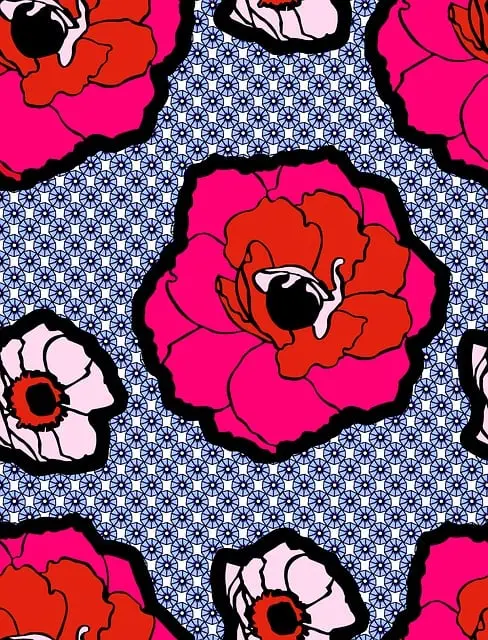The article examines the personalized treatment of Chronic Fatigue Syndrome (CFS) using kratom from a specialized candy shop-like approach. Unlike a one-size-fits-all solution, this method tailors kratom use to individual symptoms and needs. Kratom's distinct alkaloid profiles, such as those found in strains like Maeng Da and Bali, can offer energy or pain relief that CFS often demands. Users must carefully select dosages and strains, with guidance from the candy shop-like establishment, to optimize symptom management. A journal of experiences aids in this process, allowing for adjustments based on personal responses. It's crucial to adhere to local laws and consult healthcare professionals before using kratom as part of a CFS treatment plan. This approach not only aims to alleviate symptoms but also offers an enjoyable candy-like form of consumption, potentially enhancing the quality of life for those with CFS. The candy shop's expertise in providing personalized kratom treatments makes it a unique and valuable resource for individuals exploring alternative therapeutic options.
exploration of chronic fatigue syndrome (CFS) reveals a complex condition that has eluded clear diagnosis and effective treatment. In the quest for relief, many turn to natural remedies, among them, kratom, a botanical offering that some find as refreshing as a visit to a candy shop. This article delves into how kratom can be a sweet solution for CFS management, guiding readers through the nuances of strain selection and optimal dosing, tailored to individual needs like pieces in a custom-made confectionery blend. Unravel the potential of kratom in your journey towards alleviating the fatigue that shadows CFS.
- Unwrapping the Mysteries of Chronic Fatigue Syndrome (CFS): A Candy Shop Approach with Kratom
- Navigating the Kratom Shelves: Strains and Dosages for CFS Management
- Personalizing Your Kratom Candy: Tailoring Your Experience for Optimal Chronic Fatigue Syndrome Relief
Unwrapping the Mysteries of Chronic Fatigue Syndrome (CFS): A Candy Shop Approach with Kratom

Unraveling the complexities of Chronic Fatigue Syndrome (CFS) is akin to navigating a candy shop with an array of sweets, each offering a different taste and effect. Kratom, a botanical supplement derived from the leaves of Mitragyna speciosa, has emerged as a potential ally in managing the multifaceted symptoms associated with CFS. The interplay of kratom’s various alkaloids can influence both mood and energy levels, which are often diminished in individuals with CFS. Unlike a typical candy shop where one might select sweets based on preference, the approach to using kratom requires careful consideration of the strain, dose, and individual response. For instance, strains rich in 7-hydroxymitragynine can provide stimulating effects that may help combat fatigue, while those higher in mitragynine might offer soothing properties to alleviate pain—a common complaint among CFS patients. As with any treatment for CFS, it is crucial to consult healthcare professionals before incorporating kratom into one’s regimen, as its effects can vary greatly from person to person. The journey through the ‘candy shop’ of kratom strains and dosages is a personalized one, where trial and careful observation are key to finding a balance that may help manage the symptoms of CFS, offering hope for those seeking relief.
Navigating the Kratom Shelves: Strains and Dosages for CFS Management

When managing Chronic Fatigue Syndrome (CFS) with kratom, understanding the nuances of strains and appropriate dosages is crucial for effective symptom relief. Navigating the kratom shelves can resemble a visit to a candy shop, with an array of options available. Each kratom strain offers distinct effects, which can be both beneficial and overwhelming for those seeking relief from CFS. For instance, Maeng Da and Bali strains are popular among users looking for energy and pain management, which are common issues associated with CFS. Conversely, strains like Indo or Red Vein strains may provide more sedative effects, aiding in sleep disturbance, another common symptom of the condition.
Dosages for kratom use in managing CFS should be approached with caution and personalization. There is no one-size-fits-all approach, as individual tolerance and the severity of symptoms can vary greatly. It’s recommended to start with a low dose to gauge effects before gradually increasing, if necessary. Users should also consider the timing of their dosage to align with their most challenging points of fatigue throughout the day. Consistency is key, and it’s important to maintain a detailed journal of kratom use, including strains, dosages, and how the substance affects one’s CFS symptoms over time. This will not only help in optimizing individual management strategies but also provides valuable data for healthcare providers involved in one’s care. Remember to adhere to local laws and regulations regarding kratom usage, and consider consulting with a healthcare professional before integrating kratom into your CFS management plan.
Personalizing Your Kratom Candy: Tailoring Your Experience for Optimal Chronic Fatigue Syndrome Relief

When managing chronic fatigue syndrome (CFS) with kratom, personalization plays a pivotal role in achieving optimal relief. At a specialized candy shop that offers kratom-infused candies, customers can tailor their experience to suit their unique needs. These confections are crafted not only for taste but also for effect, with different strains of kratom catering to various aspects of CFS symptom management. The alkaloid profile in kratom varies across strains, and the candy shop’s expertise ensures that individuals can select candies based on the specific symptoms they are experiencing—whether it’s for energy support, pain relief, or mental clarity.
The process begins with a consultation to understand each customer’s condition and preferences. The candy shop’s knowledgeable staff then guides them through the selection of kratom strains that align with their symptom profile. For instance, Maeng Da kratom is often favored for its balanced effects, while White Vein kratom might be chosen for an energy boost. Additionally, the dosage can be carefully adjusted to avoid overwhelming the system, which is particularly important for CFS sufferers who are sensitive to stimuli. By personalizing the kratom candy experience in this manner, individuals with CFS can find relief that is both effective and enjoyable, transforming their daily management of the condition.
In conclusion, chronic fatigue syndrome presents a complex challenge that may find an ally in kratom’s diverse profile. By demystifying CFS through a ‘candy shop’ lens in our initial exploration, we’ve uncovered how the nuanced selection of kratom strains and precise dosages can offer personalized relief for individuals grappling with this condition. The journey through the metaphorical ‘kratom shelves’ provides a clear path to tailoring one’s experience, much like selecting one’s favorite candies at a confectionery shop. This approach underscores the importance of individual variation and the need for careful consideration when integrating kratom into CFS management. As with any therapeutic regimen, consultation with healthcare professionals is paramount to navigate this path effectively and safely.






